Girls don’t play video games, or so it was said. Video game software didn’t fit in with the pink-and-purple glow of the girls’ toy aisle in the 1990s, and so software was for boys.
Of course, that’s never been true: Girls have always played video games and used computers. Video games, though, were marketed to boys, creating a sort of self-fulfilling prophecy and reinforcing the stereotypes that very marketing created.
Barbie Fashion Designer was one of the first commercially successful video games marketed specifically to little girls — a game that’s now credited for kicking off the “games for girls” movement. It’s after Barbie Fashion Designer that major game companies and marketers realized there is money to be made with so-called “girl games.” The success was hard-won, though. Over in the software aisle, retailers pushed back against the title, unsure of where to put it. Yes, it was Barbie, but it didn’t make sense for a computer game to sit alongside actual dolls. But its hot-pink box stuck out in the software aisle, a place marketers had figured girls didn’t venture into anyway. And so Barbie Fashion Designer lingered in marketing equilibrium for a bit before Mattel had an idea: a TV commercial targeting both parents and children.
[embedded content]
Mattel sold more than 1 million copies of Barbie Fashion Designer by 1998, a couple years after its initial release, according to Billboard numbers from 1998. The game topped charts and outsold several games considered to be for boys, like Quake.
“[Barbie Fashion Designer] was a bestselling software title in 1996,” said Rachel Simone Weil, video game historian and founder of FEMICOM Museum, which preserves the history of girls’ toys and games, to Polygon. “How amazing that we collectively completely forgot about it, and then it was able to rise back up into the collective consciousness, where it is today. There’s another timeline where that never happened, and it just stayed in obscurity. This is one of those rare cases. For every one of these, there’s 10 that we’re never going to know about.”
Regardless of the millions made off of it, Barbie Fashion Designer is still a game for girls in an industry that struggles to fully support its women. On the other hand, it’s also a game that’s been criticized for being prescriptive, encouraging a gendered style of play and unrealistic standards of beauty. Barbie Fashion Designer was, indeed, both criticized and celebrated even back when it was first released: Jesyca Durchin, a Mattel producer on the game, recalled being told the game was corrupting little girls, even while it was also being praised for supporting computer literacy for girls.
Barbie Fashion Designer remains a key piece in the history of PC video game development in the ’90s, created by a diverse team that was pushing the limits of computers both technically and culturally. Its development time, spanning roughly one year, was grueling — consisting of 100-hour work weeks, heated moments, and immense corporate pressure, said developers — and the staff’s relief at its completion was palpable.
The legacy of Barbie Fashion Designer may be complicated, tied up in stereotypes and a challenging development cycle, but nowadays, it’s finally being consistently recognized as a formative experience for a generation of kids.
A little girl’s vision
The idea behind Barbie Fashion Designer was dreamt up by a little girl named E.J. Rifkin — ironic, given the oft-touted wisdom of marketing at the time, that girls don’t want video games. Barbie Fashion Designer was a brilliant idea because it extended the ways that some girls were already playing, specifically with dolls. As a girl, E.J. played with both dolls and computers, leading her to bring an idea to her father, Andy Rifkin, an inventor. What if she could design clothes on the computer and print them out to put on her dolls?
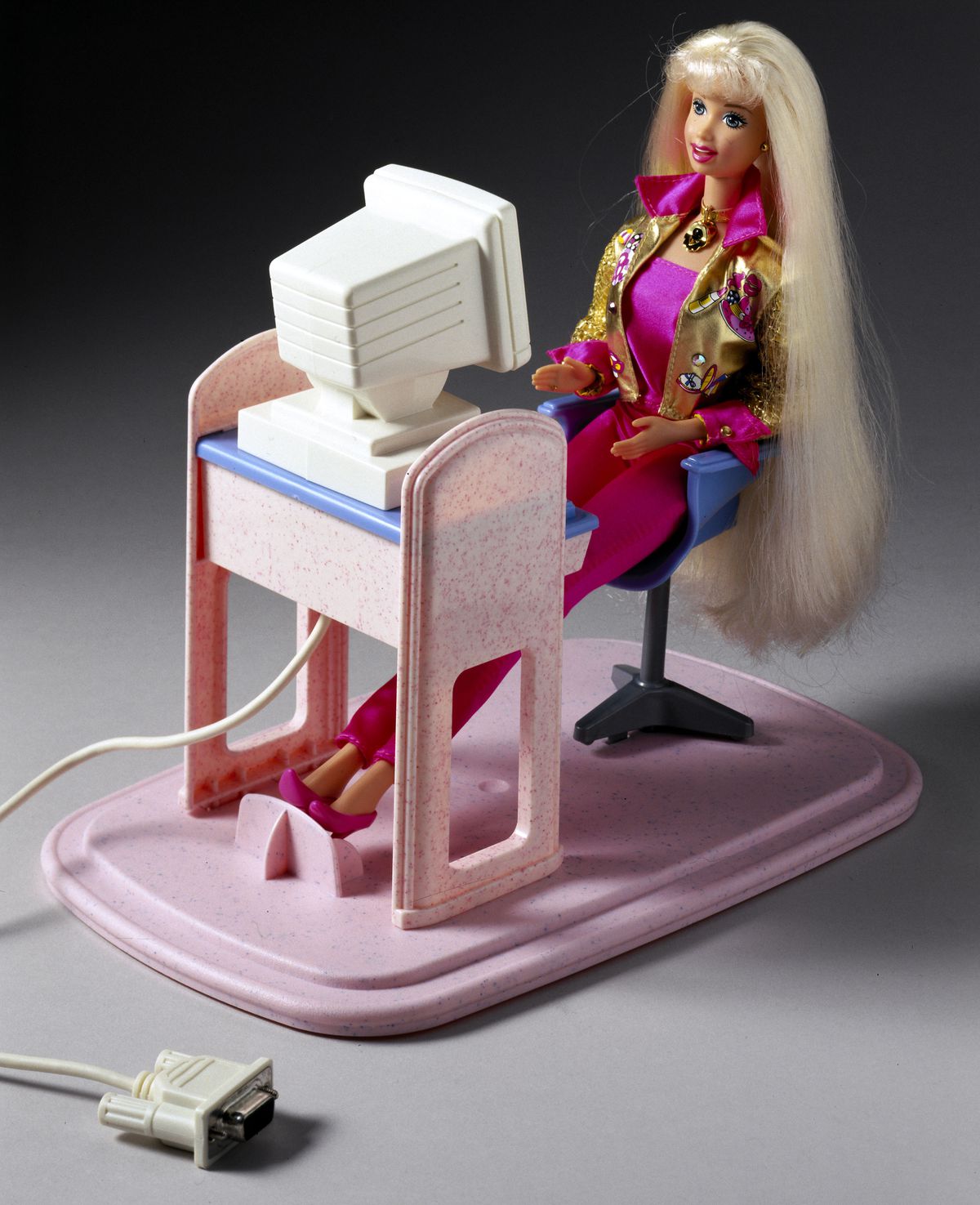
E.J. was already using paper, markers, and staplers to design custom clothes for her Barbie dolls. Andy tried putting fabric through the printer, using scissors to cut the printed material into shapes held together on a Barbie with little adhesive dots. It didn’t exactly work, as Andy admitted to Polygon in a recent interview, but the idea was there. E.J. loved it — not only was it a fun new way to play with her dolls, it was also a project she and her dad could work on together.
Andy brought the idea to Mattel several times and got rejected, over and over. But his stubbornness won out. In the end, Andy said, “They said yes.” After several years of discussions, Mattel handed him a job, too. Andy signed on to lead Mattel’s new software department division, alongside software development director Nancie S. Martin. Make this Barbie fashion game happen, Mattel said.
There were several women at Mattel who had been pushing for the company to get into software, to convince the higher-ups that there was a market for girls — and, crucially, that this wouldn’t be another Intellivision. In the 1970s, Mattel had kicked up an electronics division and put out an Atari 2600 competitor called Intellivision in 1979. The console was successful for years and made millions in profit for Mattel. The problems came in the ’80s; Mattel could no longer keep up with competitors making systems at lower prices, even with Intellivision II, its cheaper option. Eventually, Mattel canceled its Intellivision III console and laid off hundreds of workers on its hardware and software teams. It sold off the business entirely in 1984 after hundreds of millions of dollars in losses.
“Mattel wasn’t really keen to be telling people that it was working in software again,” Durchin said. Durchin called it a “skunkworks” operation, separate from the rest of Mattel. Barbie Fashion Designer was one of the first projects, but until the team produced something impressive, they were on their own. Others at Mattel remained suspicious of the division according to Barbie Fashion Designer product manager (and later, Mattel marketing director) Lauren Berzins Kelly, pointing to the ghost of Intellivision. “We would set up meetings with Barbie brand people and they wouldn’t even come,” Kelly told Polygon. “These were our co-workers in the same building.”
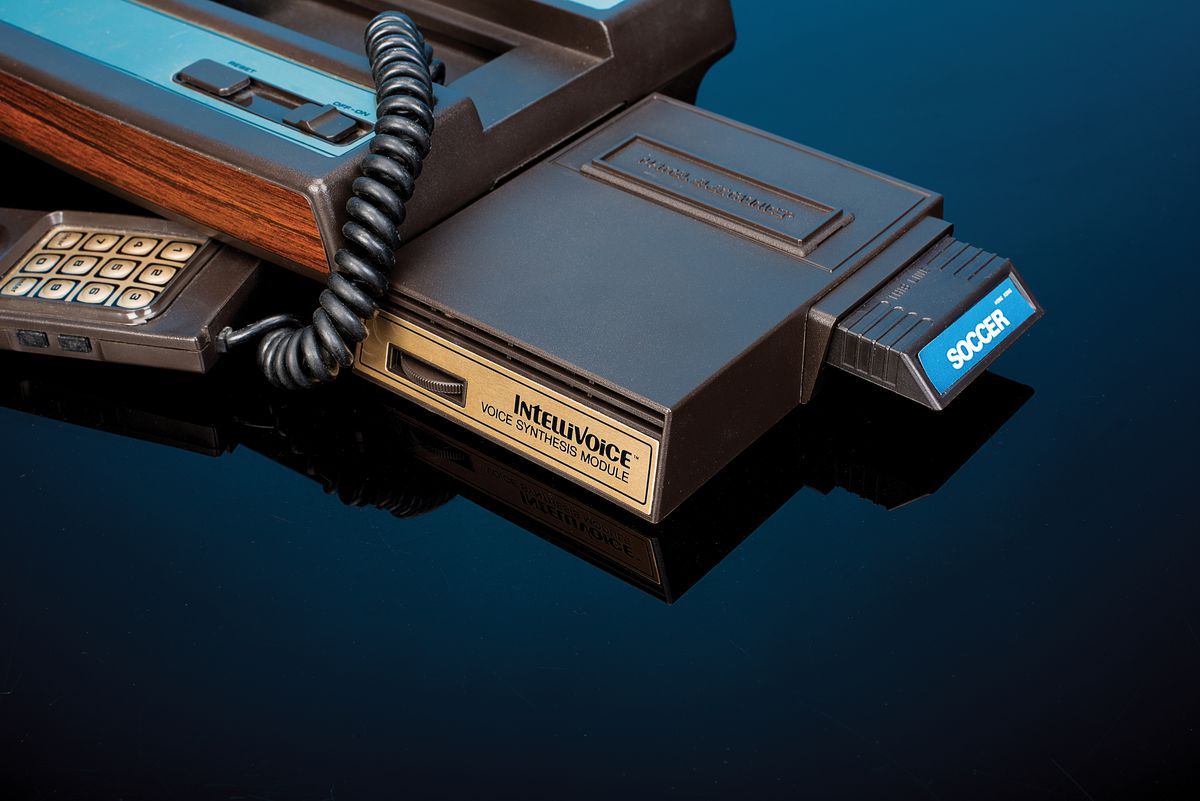
Mattel cut its costs by partnering with Digital Domain, a visual effects studio that was just spinning up its own new media (read: video game) department. You know Digital Domain’s legacy, even if you haven’t heard the name; it’s the company founded by director James Cameron, effects specialist Stan Winston, and former Lucasfilm and Industrial Light & Magic executive Scott Ross in 1993. Digital Domain did special effects for Apollo 13, which was released a year ahead of Barbie Fashion Designer, and the studio was, more famously, involved in Titanic’s production, which was going on at the same time as the Barbie game and its Cool Looks sequel. Several studios were reportedly in talks for Barbie Fashion Designer, but Mattel ended up making a deal with Digital Domain; the game was Mattel’s intellectual property, but Digital Domain paid for production, so both would profit off the game, Digital Domain co-founder Ross told Polygon.
“I gave it a double thumbs up because I thought it was a great idea, partly due to the fact that it looked like the money that was going to be made as a result of Barbie Fashion Designer was in specialized printer paper,” Ross said. Ross had a young daughter who wasn’t as into video games as his son. He saw the market potential, though. It helped that Barbie was (and still is) uniquely situated as far as brand awareness goes. When you think of dolls, you think of Barbie, and Barbie Fashion Designer, at its core, is an extension of the way kids already play with dolls — specifically Barbie dolls. “We really were extending the toy versus creating a whole different experience that had nothing to do with doll play,” Berzins Kelly said.
And so Digital Domain got to work under vice president Steve Schklair and executive producer Andrea Miloro. Under Miloro was Valerie Grant, who served as design and creative director on Barbie Fashion Designer.
Server-breaking tech and problematic printers
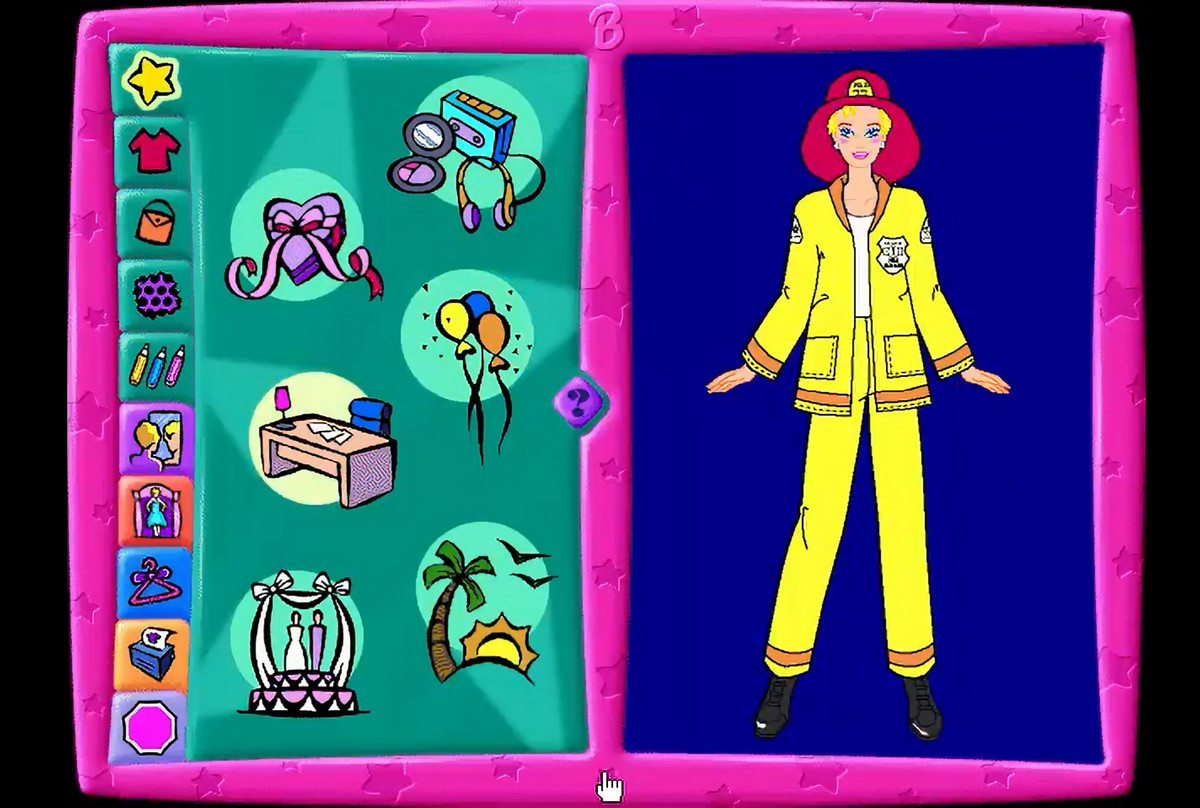
Barbie Fashion Designer isn’t a particularly complex piece of software, at least from the outside. The game can be broken down into a few parts. Barbie Fashion Designer begins with 2D clothing design. First, you choose what sort of theme to design around: Barbie can dress for a “cool career” like firefighter or business woman, or for a specific event, like her wedding, a vacation, or a date. Each of these themes has dozens of options within it — short sleeves or long sleeves, sneakers or heels, a scarf or a purse. You can add patterns to the fabric and then color them in, each little detail totally customizable.
Once you’re settled with an outfit, you can preview the look in a dressing room, where Barbie is rendered for the first time in 3D. Make changes or move on to the fashion show, where Barbie — again rendered in 3D — will strut down the runway in the outfit. She’s impressively animated, especially given the sorts of computers the game needed to run on; as she walks, her clothes move as if they’re actually fabric. She’s also clearly not a human, but a doll.
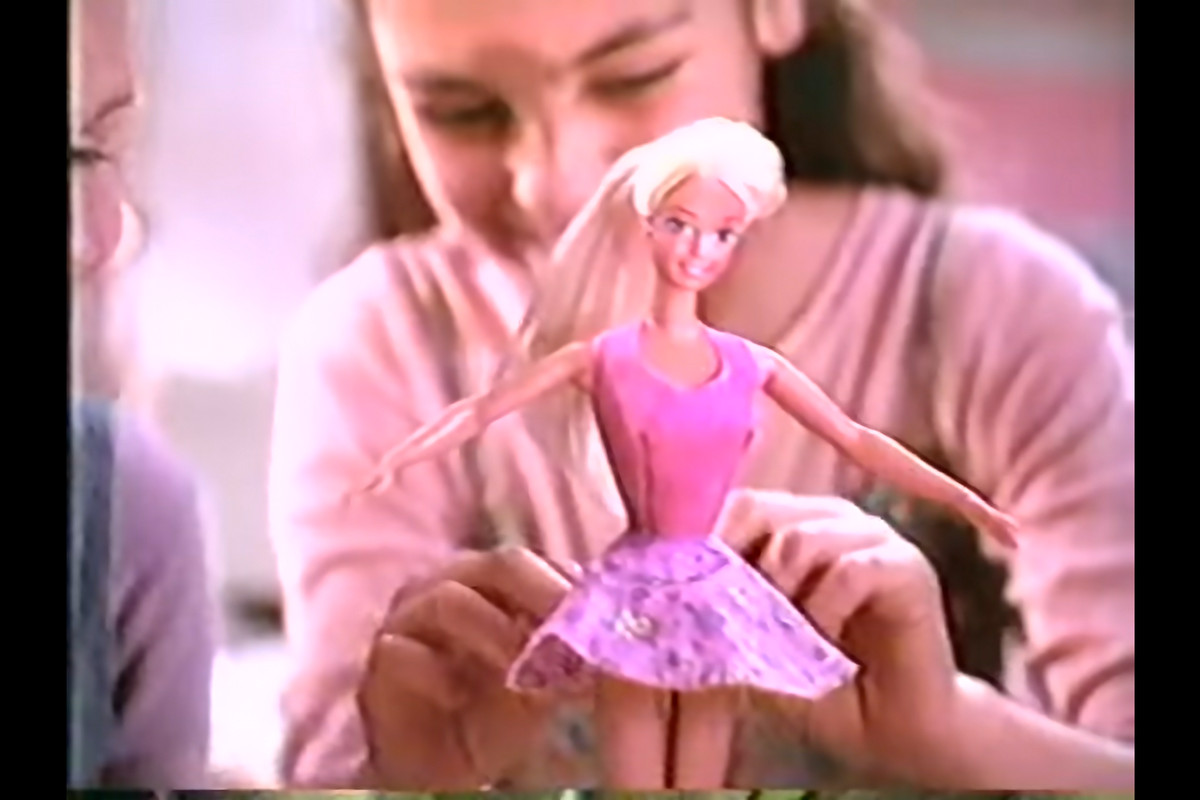
Once an outfit is finished, you can print it onto a coloring book page or create a pattern on the special fabric paper that came with the kit (later sold separately). The paper is backed with fabric, with the pattern and prints transferred on in black and white so they could be colored in with special markers. Once it’s been printed, you’d cut the pattern out and stick the pieces together with the included adhesive. Ta-da! A new outfit for Barbie.
Barbie Fashion Designer’s complexity hinges on how these separate systems work together. It’s challenging enough to build out dozens of different outfit assets in 2D, render them in 3D, and then animate them — but then there’s the fact that the whole game centers around bringing these outfits to life by stuffing fabric through a home printer. Barbie Fashion Designer’s team at Digital Domain and Mattel were doing several hard things all at once — things that hadn’t really been done before at this scale.
Grant, Barbie Fashion Designer’s co-creative director, first got to work on a prototype that built up the game’s user interface and general gameplay loop. She designed it off of a black-and-white fashion illustration she created in art school. “Getting that prototype built was so hard,” Grant said. “I had a sign taped to the back of my chair that said ‘Do not disturb’ for three weeks. I just sat and programmed for 15 hours a day, seven days a week, for three weeks.”
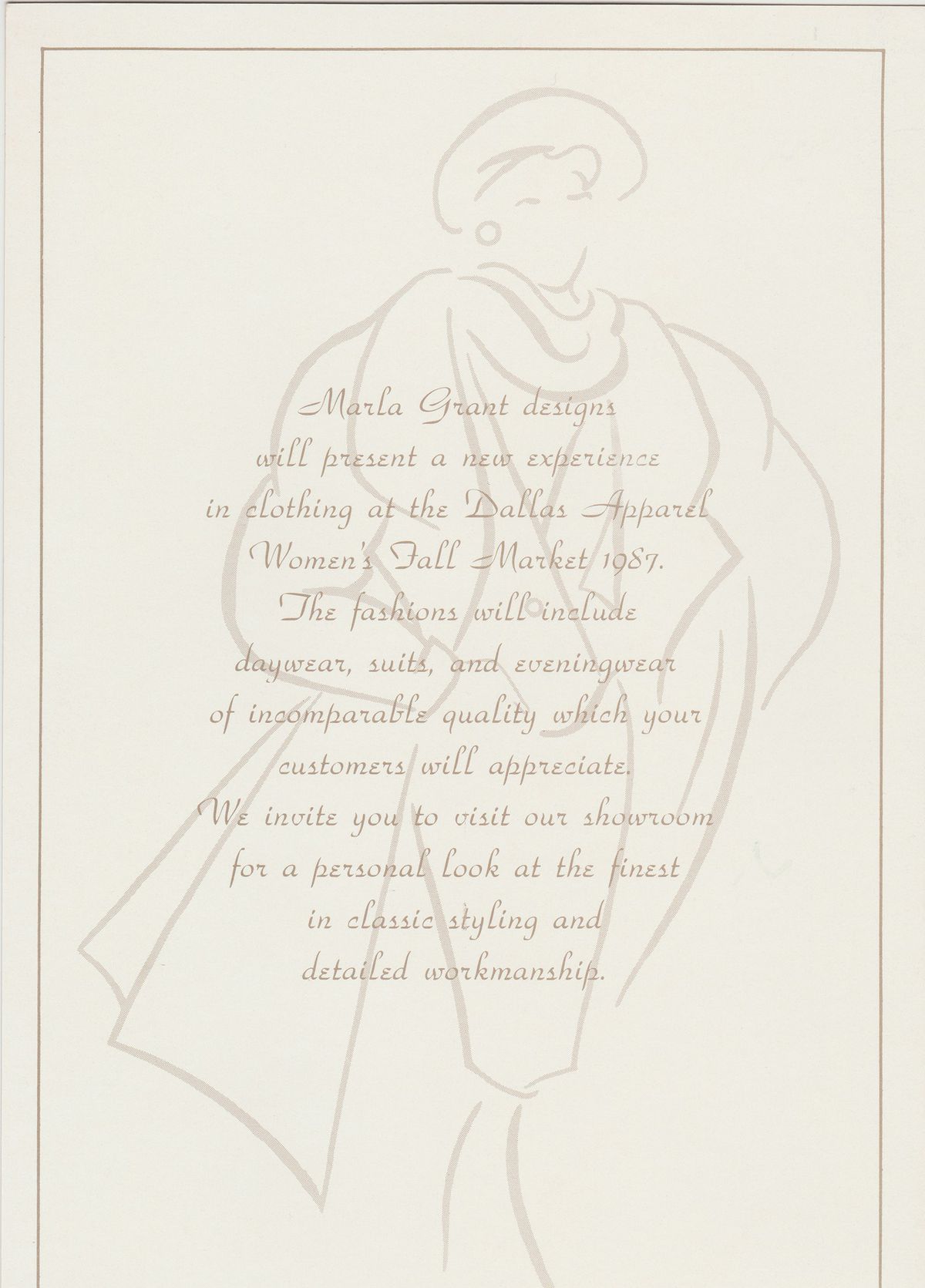
It paid off, because when Digital Domain went back to Mattel, the toy company loved it — and people at Mattel finally started to believe in the project. “Once we got popular, suddenly [Mattel] let me put a tag about the product on their Barbie doll commercials, or a ‘Look for the Barbie Fashion Designer CD-ROM!’ kind of thing,” Berzins Kelly added.
But Barbie Fashion Designer’s big challenges only got bigger from there — namely, the challenges around rendering its thousands of assets in 3D. It’s just a lot of data: There’s a huge database, a rendering engine, and then the user interface. Each part on its own wasn’t that complicated, but putting it together was. Digital Domain had a team of four programmers (two women and two men) headed up by lead programmer Patrick Dalton. Like Grant, Dalton got hired by Digital Domain before production on Barbie Fashion Designer had formally started. “They were like, ‘Can you come back in two weeks?’ ‘No, I need to pay rent!’” he laughed. “They were able to find me other things to do for a few weeks.”
Digital Domain and Mattel told Dalton what his programming team needed to get done, and he got to work. “It occurred to me that if we could pre-render all of the data in a way that would capture the lighting, then we could apply color to it at game time, so we’d end up with a rendering engine that could make a realistic-looking Barbie walk down the runway.”
While Dalton and the programmers were figuring this out, the art and 3D modeling teams were creating garments and putting them on the runway Barbie, which used motion capture data from a real runway model. Jordan Harris was in charge of 3D motion capture and animation, alongside a team of several 3D clothing modelers and animators, including Vicky Kwan. Kwan said it was like an assembly line process, starting from the initial clothing sketches all the way to the animators. Kwan animated the clothing as it came down the runway: She would attach clothes to the Barbie model and animate each piece of clothing so it moved in a realistic way. “Let’s say it was a silk, so it’d have a lot of flow,” Kwan said. “If it was linen or a stiffer fabric, it wouldn’t have as much movement.”

It was meticulous and somewhat tedious work, with each of the assembly line artists needing to reach a quota of outfits out of the thousands of assets in the game. “It was really, really, really long hours,” Kwan said. “I would say over 10 hours a day, then go home. At one point, I fell asleep in my bathtub because I was so exhausted.” It was her first job out of school, and she felt like she had to pay her dues; why not on something she considered groundbreaking? Digital Domain was doing something that hadn’t been done before. There was a camaraderie with her co-workers, too, a willingness on their part to go out of their way to help each other solve problems.
Clothing can be harder to animate, she said, the closer the fabric gets to Barbie’s body. It can’t intersect with Barbie herself. “We were hand-animating at some points,” Kwan said. “A 3D model has a mesh that has, let’s say, 1,000 points. Each point I had to hand-animate or put back into place if it looked off. Let’s say they were all perfectly flattened triangles. And now one triangle is really off, so you’d have to animate that triangle, or one point, throughout the animation sequence.” To put it simply, it was a lot of technical work.

Barbie’s infamously controversial proportions — i.e., her huge boobs — made the job even harder. The camera for Barbie Fashion Designer is pointed upward, as if it’s sitting in an audience. But according to 3D animator Harris, this viewing angle meant that you couldn’t always see Barbie’s face over her chest, especially in looser clothes.
“We had to adjust Barbie so she was not as large-busted and the clothes so that they were a little closer and a tighter fit so you could see her face from that angle,” he said. “It was a very bizarre thing. Sometimes motion capture doesn’t translate so well into cartoonish characters.”
Mattel is strict with the brand, Harris said, but players needed to see Barbie’s face. After all, Mattel had specialists who came in to inspect every little piece of the character. Barbie’s eye people came to the texture artists one day, super upset about Barbie’s eyes, he said — there was an “engaged” emergency conversation where they laid it out: “This is what you need to do to get it right.”
On the back end, Dalton and his team were working hard to, like the exec said, just get it right.
“It’s not all complicated so much as there were a lot of details to get together,” Dalton said. “To save on space and data, we cut the garments into pieces so that you could have a particular type of bodice and then a particular kind of sleeve. We made it so all the sleeves and bodices were connected in the same way, so you can mix and match. That was the complication of the data. It wasn’t complex as much as it was a lot of data.”
Details and data were modeled in one place and rendered in another, Dalton said, and there was a bug in the translation between the two. It almost generated more data than the memory bounds of Digital Domain’s rendering servers. “Because of the translator bug, we could only run a couple of our renders at a time, otherwise it would bring down the server,” said Dalton. “And by bringing down the server, I mean it would make it so the rest of the company couldn’t work. The first time we tried, the whole studio came down. Let’s just say that’s really embarrassing.” Durchin, Barbie Fashion Designer producer, echoed Dalton’s sentiment about the servers: “They were making Titanic and stealing our server time. I started guarding the server. I called Titanic ‘that stupid boat movie.’ Everyone knows the ending!”
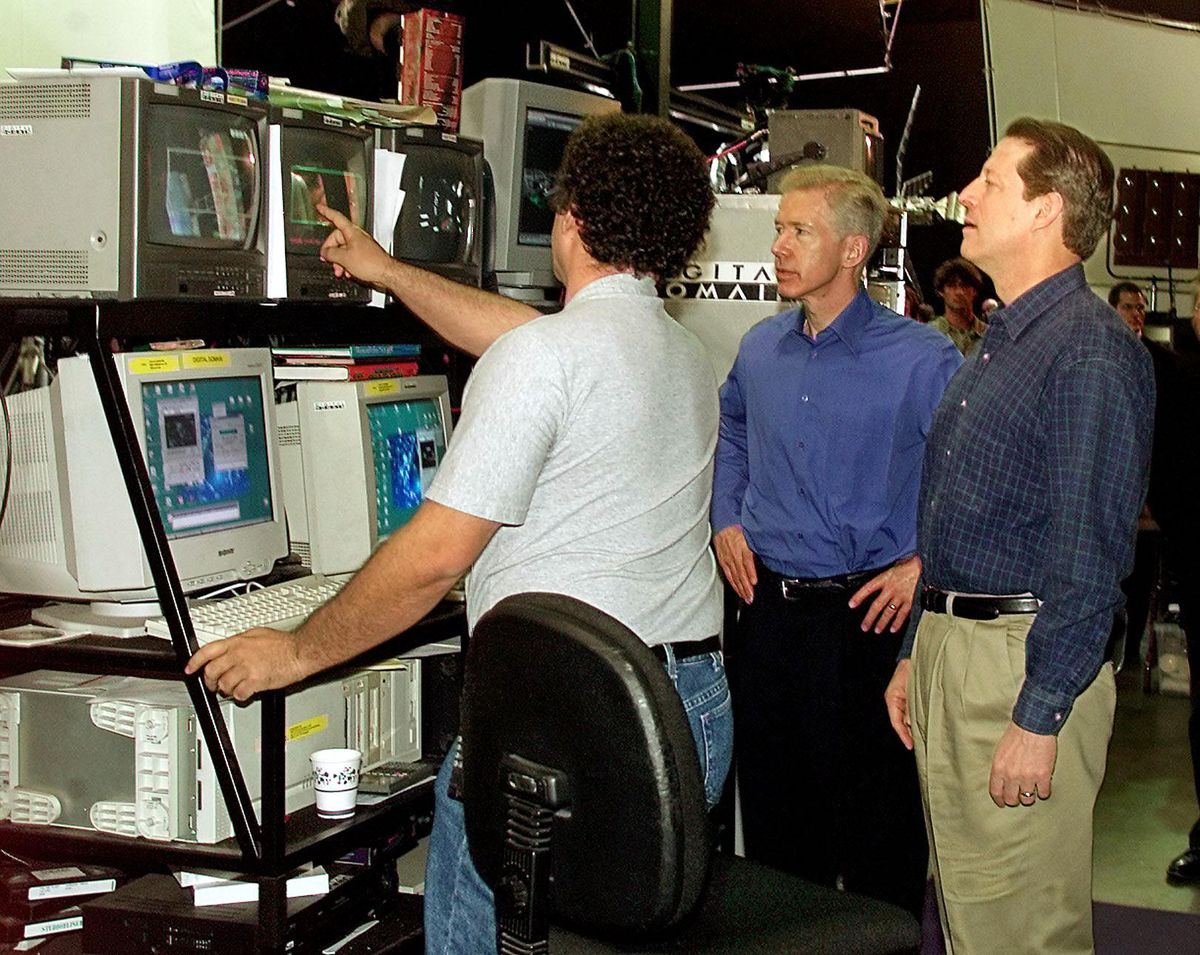
Dalton said he was working up to 100-hour weeks leading up to the release, working to shave down rendering times on the game. A kid on a computer isn’t going to wait 20 minutes for Barbie to load, no matter how cute the countdown is. “It was a huge problem,” Durchin added. “We have to bring in an external group — I called them digital cowboys — and they got a bonus amount of money determined by how many seconds they could take off that rendering time.”
None of this addressed the final problem of getting all this data printed onto a sheet of fabric for kids to cut out and put onto Barbie. Durchin spent a lot of time trying to get this to work, testing different methods on all sorts of materials and through lots of printers. “I had all these printers in my cubicle,” Durchin said. “It was a joke that I had a cloud of toxic haze above my cubicle because I was burning printers. Now that I think about it, we should have given this to a material scientist.”
But then, Durchin had a breakthrough, she said, after a nightmare where her bed was on fire. “I woke up and I was like, ‘Oh my god, I have to quit this job, because I’m really stressed out.’” But then a revelation hit her: There’s sometimes a fire retardant on sheets, the ones made for kids. She cut her pillowcase into pieces and put the fabric through her printer, and it worked. Mattel ended up using Avery, an adhesives company, to make the fabric.
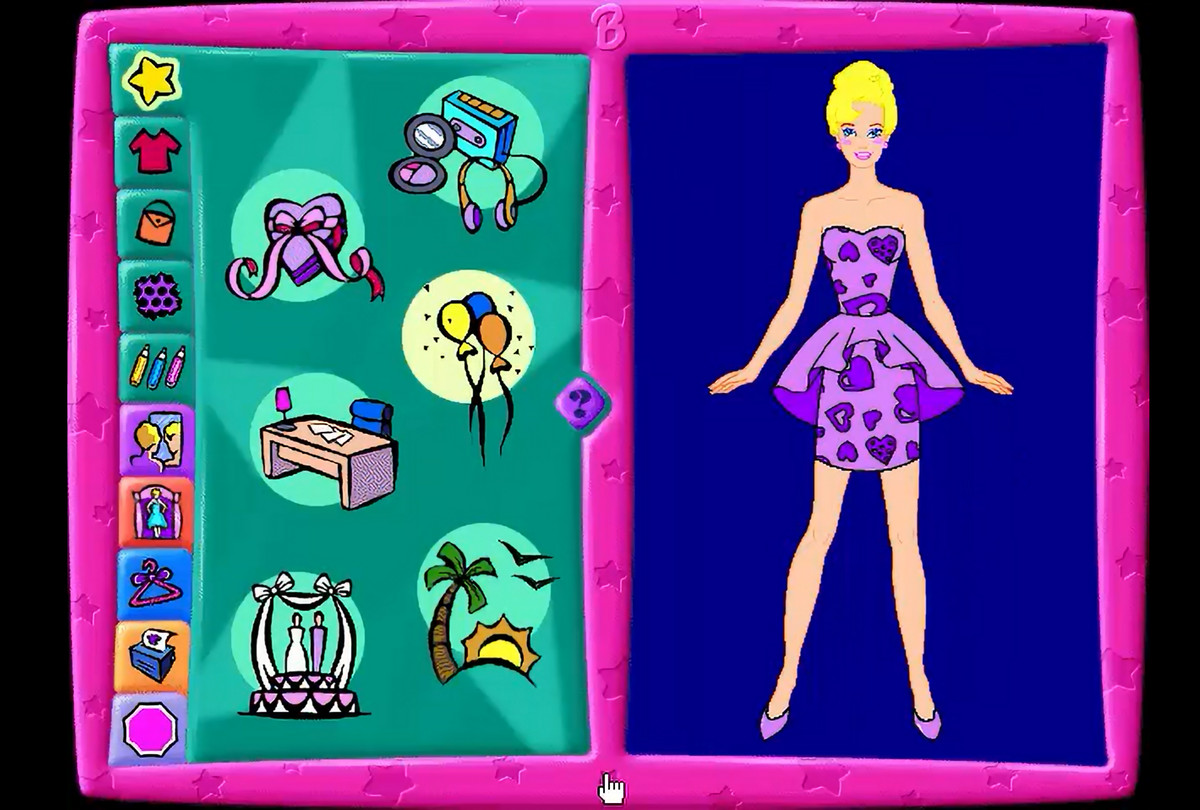
Dalton said the stress of it all pushed him to his limits, so much so that immediately after the game’s launch, he felt superstitious about upsetting Barbie — as in, the metaphysical concept of Barbie. For years, he was afraid to even talk about his experiences working on the game because of this bizarre and fantastical fear. Barbie Fashion Designer broke people, he said.
Grant said it sometimes felt like a race to the bottom — who could work themselves to death the fastest? But still, Digital Domain’s developers were adamant in interviews with Polygon that the experience wasn’t all bad. Even in the hardest times, the team supported each other; Dalton told a story of how the group pooled money to give him before his honeymoon, which was, coincidentally, right in the middle of development. Most knew the game and the team were special, although back then, they didn’t realize it’d have a lasting legacy. “I just thought it would be a really cool game for children,” Kwan said.
Flights, fears, and a mad rush to market
Programmer Leigh Bauserman was brought on later in development, too, to put everything into a working user interface. She joined Digital Domain specifically because she wanted to work on Barbie Fashion Designer, a game she’d heard about in a Business Week article. (When she began, she remembers, James Cameron was out of the office shooting underwater footage of the Titanic wreck with Robert Ballard.) Bauserman’s first task? Getting Barbie Fashion Designer enough of a UI that it could get shown off at that year’s E3 — making it a piece of software that people could actually play with. (Her next important assignment was to fix Barbie’s wedding dress, which she said was originally rendered in gray instead of white. She stayed up all night trying to fix it: “We can’t have a dingy wedding dress!”)
Around this time, Digital Domain and Mattel were ready to drop in Chris Anthony Lansdowne’s Barbie voice: a smart, playful affectation with an emphasis on encouragement. “I wanted her to be soft and sweet, like a little girl’s best friend,” Anthony Lansdowne told Polygon. “I went in [for my audition] and said, ‘Hi, it’s me, Barbie. Welcome to McDonald’s. You look very cool!’” The next day, she went into the Mattel office, got in a voice booth for executives, and repeated the line — minus the part about McDonald’s. “The director put his finger on the talkthrough button and said, ‘Hello, Barbie. Welcome to Mattel. We start tomorrow.’”
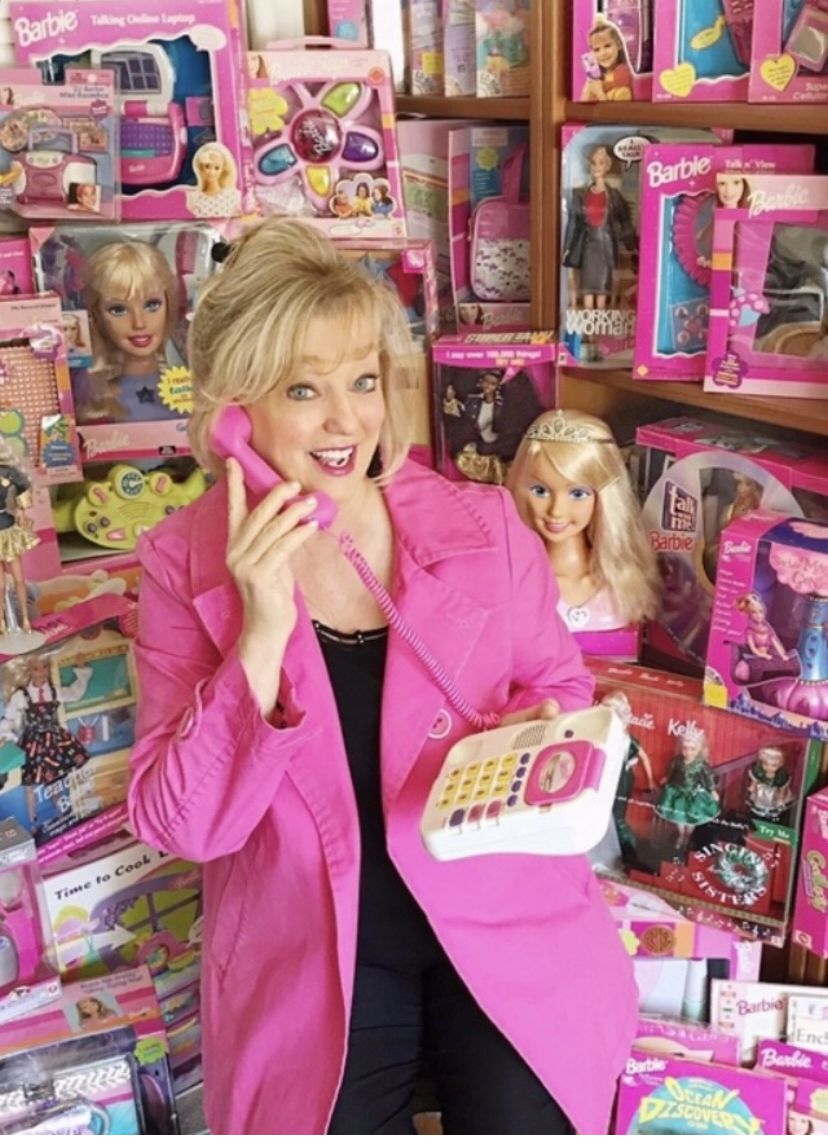
Anthony Lansdowne first served as the voice of Barbie in a line of toys, and ended up recording in the studio nonstop from then on. “We did toy after cellphone after boombox after all the CD-ROMs,” Anthony Lansdowne said. “We went on for months and months doing Barbie toys, because suddenly Barbie had a voice.” Barbie Fashion Designer was the first Barbie video game, but plenty came after. “I remember thinking, ‘Wow, this is cutting edge. I’m going to be in all these little girls’ homes. They’re going to be playing, and I just want to make sure Barbie is a good friend,’” she said.
Mattel and Digital Domain brought on Fletcher Beasley, who’d previously worked on video games like X-Men and Spider-Man on the Sega Genesis, for the music. He composed for Barbie Fashion Designer on the side while still at his other studio job. The music’s all in MIDI, so there wasn’t too much variation; it had to sound good even on the worst of computers. The tunes changed with the theme of the clothes.
“There was one piece that was supposed to be more classic,” Beasley said. “They really liked ‘Pachelbel’s Canon,’ so it was a repetitive canon that builds.” The results were a lot different than the music he was used to working on. He said he wasn’t totally jazzed on the project, but he took it on because he needed extra money. Soon, however, he realized he had underestimated Barbie Fashion Designer: “The cool thing was that there was a real enthusiasm and excitement from the team, which was infectious and made you want to work on it.”
Digital Domain and Mattel were working right up to the last minute. “We were so late that I had to take the gold master personally to the replication lab,” Durchin said. “I took our head of QA and his right-hand person and we flew at midnight to Tuscaloosa, Alabama.” Together, they went through the final disk manufacturing process together: “I had to put on the whole [safety] outfit with the goggles. I had to approve the glass master before replication. It had to be booted up and tested again.”
Barbie Fashion Designer couldn’t just be packaged into boxes and shipped out to retailers once the disks were made, either. The software came alongside that printable fabric, markers for coloring, and several accessories — like shoes — for Barbie. “It was like chasing an octopus with a lot of moving arms,” Rifkin said.
The start of a movement
However late, Barbie Fashion Designer did get released ahead of Christmas 1996. Durchin said the game didn’t sell well in its first weekend. It was a “fight,” she said, to determine where the product was going to sit in the store. Retailers wanted it in the software aisle, but Mattel didn’t think girls would find it there. It had to go into the toy aisle, among the other Barbie products.
“The problem wasn’t that girls didn’t play with computers,” Berzins Kelly said. “We, with the power of Mattel, had so much connection with research. We knew that girls wanted to play on the computer. It was more having to sell it to the buyers and the big toy stores.”
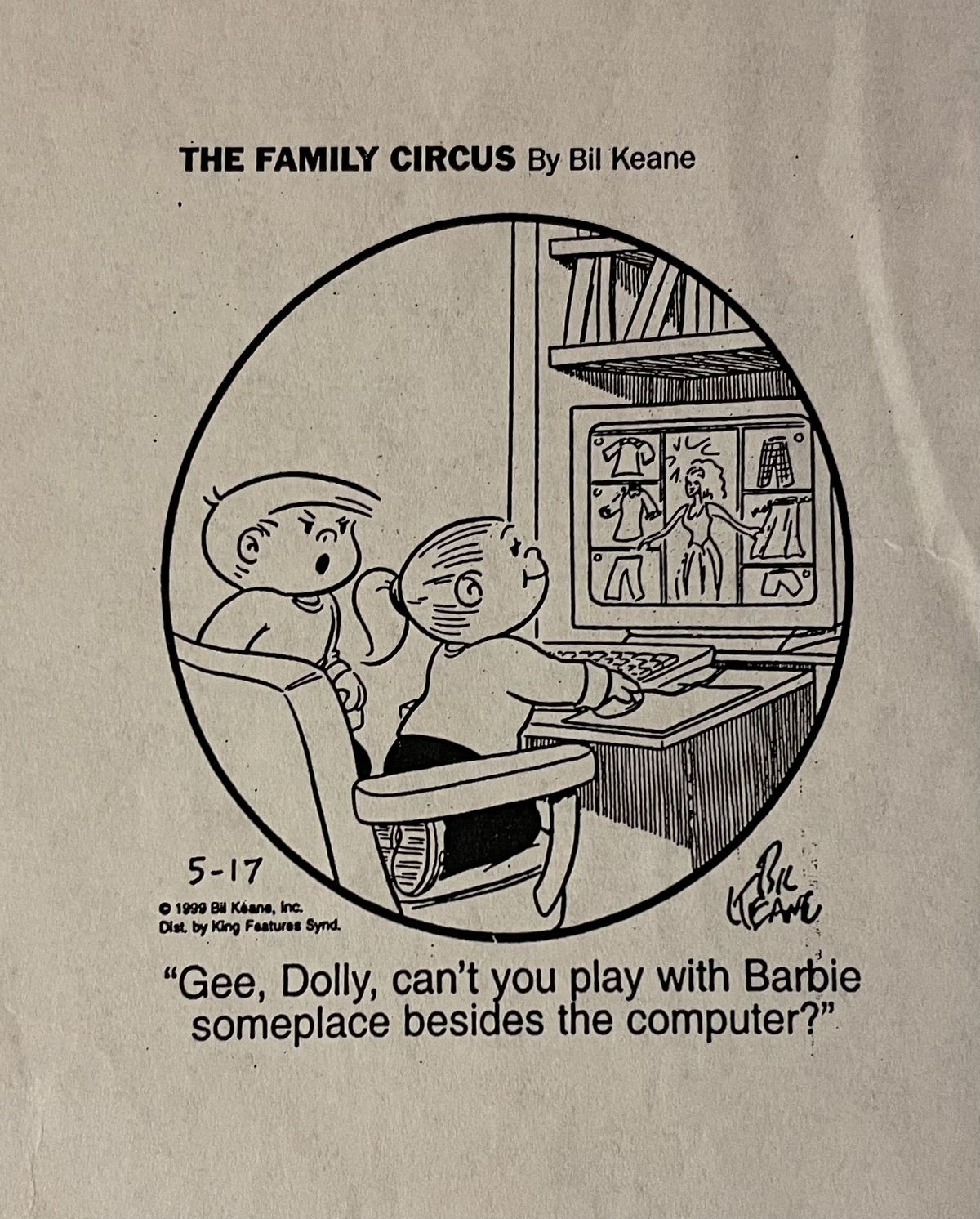
Once the commercial hit, starring a young Mila Kunis and a tagline that said “computers are cool for girls,” the sales skyrocketed. It didn’t matter where the software was located in stores. Berzins Kelly explained that Mattel’s advertising targeted adults and kids — adults because they buy the product, and kids because they’ll ask for it. “If there’s anything Mattel really knows how to do, it’s the promise of a play experience on a damn toy commercial,” Durchin added.
Barbie Fashion Designer was the top seller that holiday season, Berzins Kelly said — so much so that Mattel actually struggled to keep up with demand. The CD-ROMs were easy to make, but the products inside were all made in China. “We actually had to sponsor an airplane to get the products brought over,” Berzins Kelly said.
Mattel quickly spun up a sequel, Barbie Cool Looks Fashion Designer, which was released in 1997. Then, Mattel flooded the market with more Barbie games: Barbie Magic Hair Styler, Barbie Riding Club, the Detective Barbie trio, and Magic Fairy Tales: Barbie as Rapunzel — among others. (Digital Domain’s only other Barbie game was Cool Looks.) Some of these titles were more successful than others, but all of them showed how much girls wanted to play games. They helped push the “games for girls” movement, an informal surge in games marketed toward girls. “The goal was twofold: to sell an untapped audience and to encourage little girls to take an interest in STEM fields,” game developer and author of Gamer Girls: 25 Women Who Built the Video Game Industry Mary Kenney wrote in Harper’s Bazaar in 2022.
The girl games movement was both celebrated and criticized — and from all angles. Depending on who you asked at the time, these games were crucial to computer literacy and a gateway to STEM, a sham that held up problematic gender roles, unwelcome in a space dominated by men, or not even video games at all. While Barbie Fashion Designer was being gobbled up by children, it stood out against an industry backdrop of dark, moody shooters, both metaphorically and physically. Barbie Fashion Designer’s hot-pink carpeting seemed to glow on the floor of E3. A couple years later, Durchin presented research at the Game Developers Conference, only to face a heated response as attendees debated whether Barbie games “rotted [a] child’s mind,” as Kotaku described in 2020.
Weil has come up against these ideals in her preservation work. “I had an exhibit that was a couple games under glass at a museum,” she said. “It was vandalized by a woman who was upset that I was portraying women with these stereotypes.” She said there was pushback, too, that these games shouldn’t be held up as goals, that they didn’t count. “I found it quite difficult to contribute to video game history and walk up with a stack of Barbie CD-ROMs and say, ‘Hey, I’d like to add this to video game history.’”

Some may argue that the video game industry has moved past the games for girls movement and the debate over the push and pull between feminist and feminine, as Kenney put it, in recent years. Barbie Fashion Designer is openly celebrated now, after all these years, with an induction into the World Video Game Hall of Fame at the Strong National Museum of Play alongside The Last of Us, Wii Sports, and Computer Space. For this honor, it beat out the likes of Quake, Call of Duty 4: Modern Warfare, and GoldenEye 007. It’s an acknowledgement of the progress that’s led to the modern-day understanding that games can be for girls, but they can also be just games for anyone. After all, Barbie Fashion Designer was absolutely played by boys, and plenty of girls would call Doom their formative gaming experience. The game was a catalyst not only for the games for girls movement, but also for the impact it had — and still has — on the industry.
The legacy of Barbie Fashion Designer does not ignore the nuance of its existence or the struggles and joys of its development. After all, there are a lot of important and popular games and franchises that also had a troubled development period or have been critically analyzed for a variety of reasons, like BioShock Infinite’s turbulent development or Call of Duty’s place in the military-industrial complex. Like its contemporaries, this important game has finally gotten its due.
- SEO Powered Content & PR Distribution. Get Amplified Today.
- PlatoData.Network Vertical Generative Ai. Empower Yourself. Access Here.
- PlatoAiStream. Web3 Intelligence. Knowledge Amplified. Access Here.
- PlatoESG. Automotive / EVs, Carbon, CleanTech, Energy, Environment, Solar, Waste Management. Access Here.
- BlockOffsets. Modernizing Environmental Offset Ownership. Access Here.
- Source: https://www.polygon.com/23776996/barbie-fashion-designer-retro-game-untold-story-history



